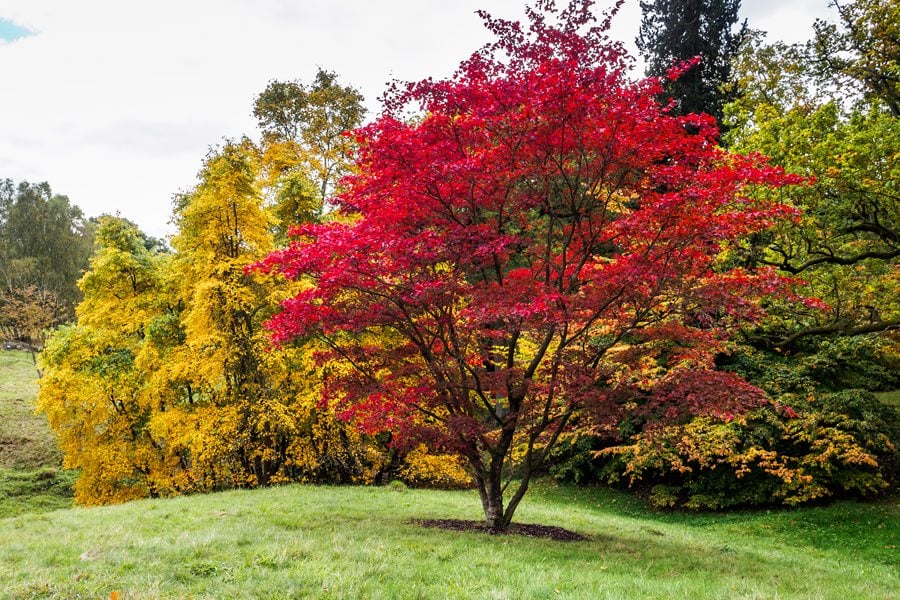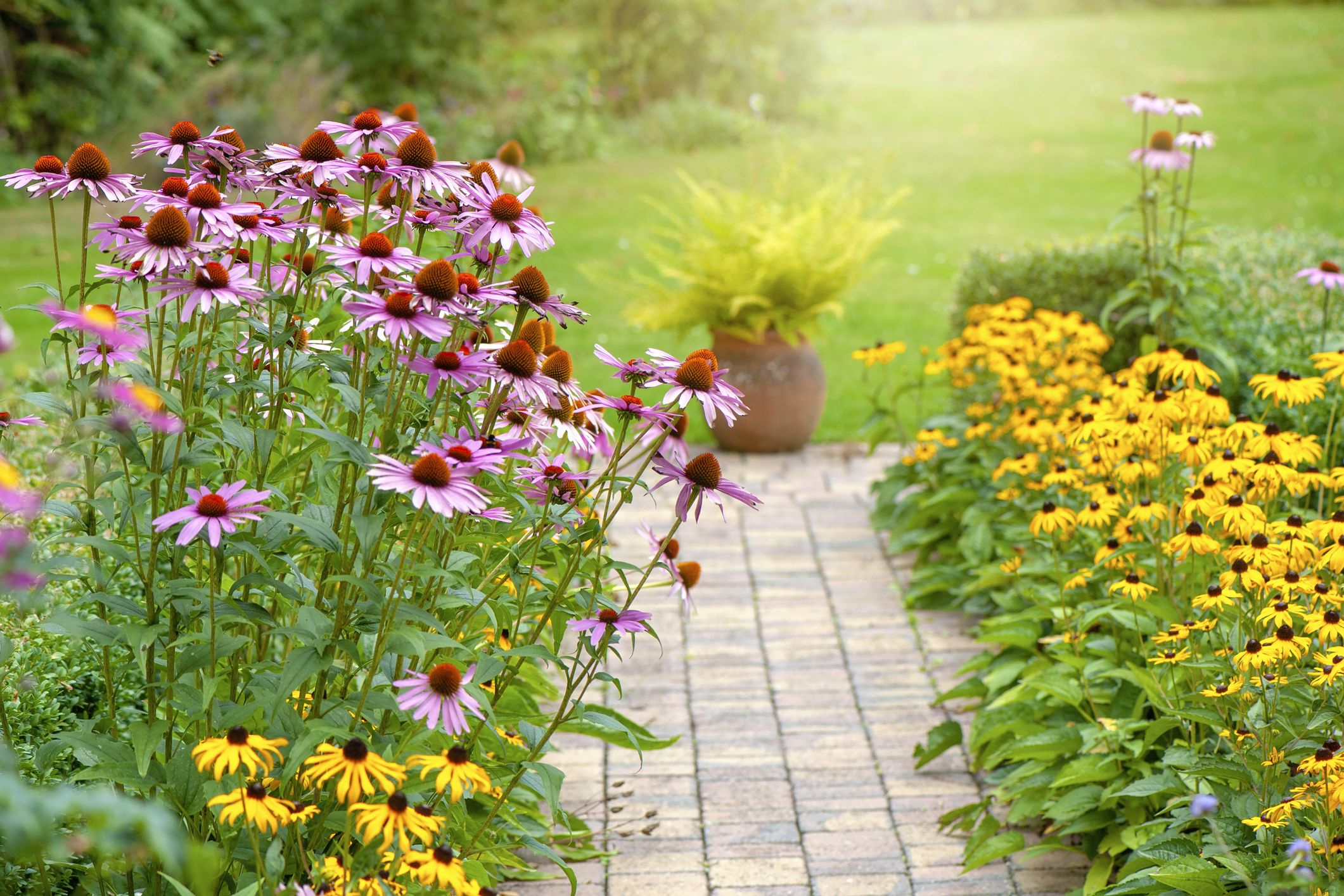Stunning Companion Plants For Burning Bush
Stunning Companion Plants for Burning Bush
Burning bush (Euonymus alatus) is a popular shrub known for its fiery red fall foliage. It is a relatively easy-care plant that can be grown in a variety of conditions, but it does best in full sun. Burning bush can grow to be quite large, so it is important to consider the size of your space when choosing companion plants.
Here are some stunning companion plants for burning bush:
- Japanese maple: Japanese maples (Acer palmatum) are a beautiful addition to any garden. They come in a variety of colors, including red, orange, yellow, and green. Japanese maples prefer partial shade, so they can help to provide some relief from the hot sun for your burning bush.

- Evergreens: Evergreens are a great way to add year-round interest to your garden. They can also help to provide some privacy for your burning bush. Some good options for evergreens include pines, spruces, firs, and hemlocks.
- Flowering shrubs: Flowering shrubs can add a pop of color to your garden in the spring and summer. Some good options for flowering shrubs include lilac, hydrangea, and azalea.

- Perennials: Perennials are plants that come back year after year. They are a great way to add color and interest to your garden for a long period of time. Some good options for perennials include coneflowers, daylilies, and black-eyed Susans.

- Groundcovers: Groundcovers can help to fill in the space around your burning bush and prevent weeds from growing. Some good options for groundcovers include pachysandra, creeping thyme, and wintergreen.
When choosing companion plants for burning bush, it is important to consider the size of the plants, their sunlight requirements, and their water needs. It is also a good idea to choose plants that will bloom at different times of the year to create a garden that is in bloom all season long.
Here are some additional tips for choosing companion plants for burning bush:
- Consider the size of the plants. Burning bush can grow to be quite large, so you will need to choose companion plants that are not too small.
- Consider the sunlight requirements of the plants. Burning bush prefers full sun, so you will need to choose companion plants that also prefer full sun.
- Consider the water needs of the plants. Burning bush is drought tolerant, so you will need to choose companion plants that have similar water needs.
- Choose plants that will bloom at different times of the year. This will help to create a garden that is in bloom all season long.
With a little planning, you can easily find the perfect companion plants for your burning bush. By choosing plants that complement each other in terms of size, sunlight requirements, and water needs, you can create a beautiful and harmonious garden that will be enjoyed for years to come.
Burning bush (Euonymus alatus) is a deciduous shrub that is known for its bright red foliage in the fall. It is a relatively easy plant to grow and can be found in many gardens. However, burning bush can be invasive in some areas, so it is important to choose companion plants that will help to control its growth.
Some good companion plants for burning bush include:
- Japanese cryptomeria: This evergreen tree has dense foliage that will help to prevent weeds from growing under the burning bush.
- Douglas fir: This coniferous tree is also a good choice for a companion plant for burning bush. It has a slow growth rate and will not outgrow the burning bush.
- Aster dumosus 'Sapphire': This bushy aster provides a bold splash of color in the late summer and fall. It is a good choice for companion planting with burning bush because it has similar growing requirements.
- Imperata cylindrica 'Red Baron': This Japanese blood grass is striking and eye-catching with its brilliant red foliage. It is a good choice for companion planting with burning bush because it can tolerate full sun and dry soil.
- Pennisetum setaceum 'Rubrum': This purple fountain grass is another good choice for companion planting with burning bush. It is a tall grass that provides striking vertical interest in the garden.
For more information about burning bush companion plants, please visit Gardenia Inspiration. This website has a comprehensive list of plants that are compatible with burning bush. It also provides tips on how to plant and care for these plants.
FAQ of burning bush companion plants
- What are some good companion plants for burning bush?
Burning bush (Euonymus alatus) is a deciduous shrub that can grow up to 15 feet tall. It is native to eastern Asia and is known for its bright orange and red fall foliage. Burning bush is a relatively easy plant to care for and can be grown in a variety of soil types and light conditions. However, it is important to choose companion plants that will complement the burning bush's growth habit and color.
Some good companion plants for burning bush include:
* Other deciduous shrubs: Burning bush can be planted alongside other deciduous shrubs that have similar growth habits and color. Some good options include chokeberry (Aronia arbutifolia), red twig dogwood (Cornus sericea), and ninebark (Physocarpus opulifolius).
* Evergreen shrubs: Burning bush can also be planted alongside evergreen shrubs that will provide year-round interest. Some good options include boxwood (Buxus sempervirens), holly (Ilex spp.), and privet (Ligustrum spp.).
* Perennials: Burning bush can also be planted alongside perennials that will bloom in the spring, summer, or fall. Some good options include asters (Aster spp.), coneflowers (Echinacea spp.), and sedums (Sedum spp.).
* Grasses: Burning bush can also be planted alongside grasses that will add movement and texture to the landscape. Some good options include ornamental grasses such as miscanthus (Miscanthus spp.), fountain grass (Pennisetum spp.), and blue fescue (Festuca glauca).
- What are some things to consider when choosing companion plants for burning bush?
When choosing companion plants for burning bush, there are a few things to keep in mind:
* Growth habit: Burning bush is a relatively fast-growing shrub, so it is important to choose companion plants that will not be overwhelmed by its size.
* Color: Burning bush has bright orange and red fall foliage, so it is important to choose companion plants that will complement its color.
* Sunlight requirements: Burning bush can be grown in full sun or partial shade, so it is important to choose companion plants that have similar sunlight requirements.
* Water needs: Burning bush is relatively drought-tolerant, so it is important to choose companion plants that have similar water needs.
* Pests and diseases: Burning bush is susceptible to a few pests and diseases, so it is important to choose companion plants that are not susceptible to the same pests and diseases.
- Is burning bush invasive?
Yes, burning bush (Euonymus alatus) is considered an invasive species in many parts of the United States. It is native to eastern Asia and was introduced to North America in the early 1800s. Burning bush is a fast-growing shrub that can spread aggressively by seed and root. It can outcompete native plants and alter the natural ecosystem. If you are considering planting burning bush, it is important to do your research and make sure that it is not prohibited in your area.
- How can I prevent burning bush from becoming invasive?
If you are planting burning bush, there are a few things you can do to prevent it from becoming invasive:
* Plant it in a contained area, such as a pot or a raised bed.
* Prune it regularly to remove any suckers or seedlings.
* Do not allow it to self-seed.
* If you are removing burning bush from your property, do not compost the plant material. Instead, dispose of it in a landfill.
Image of burning bush companion plants
5 different images of burning bush companion plants:
- Daylilies: Daylilies are a good companion plant for burning bush because they bloom at the same time and have similar light and water requirements. They can also help to deter pests from the burning bush.

- Hostas: Hostas are another good companion plant for burning bush. They provide shade for the burning bush in the summer and can help to prevent it from getting too dry. Hostas also attract beneficial insects that help to control pests.

- Coneflowers: Coneflowers are a good choice for a companion plant because they add height and interest to the garden. They also attract butterflies and other pollinators.

- Sedum: Sedum is a low-maintenance plant that is drought-tolerant and can help to prevent the burning bush from getting too dry. It also blooms in the fall, which can help to extend the flowering season in the garden.

- Astilbe: Astilbe is a shade-loving plant that can help to provide shade for the burning bush in the summer. It also blooms in the summer, which can add color to the garden.

Post a Comment for " Stunning Companion Plants For Burning Bush"